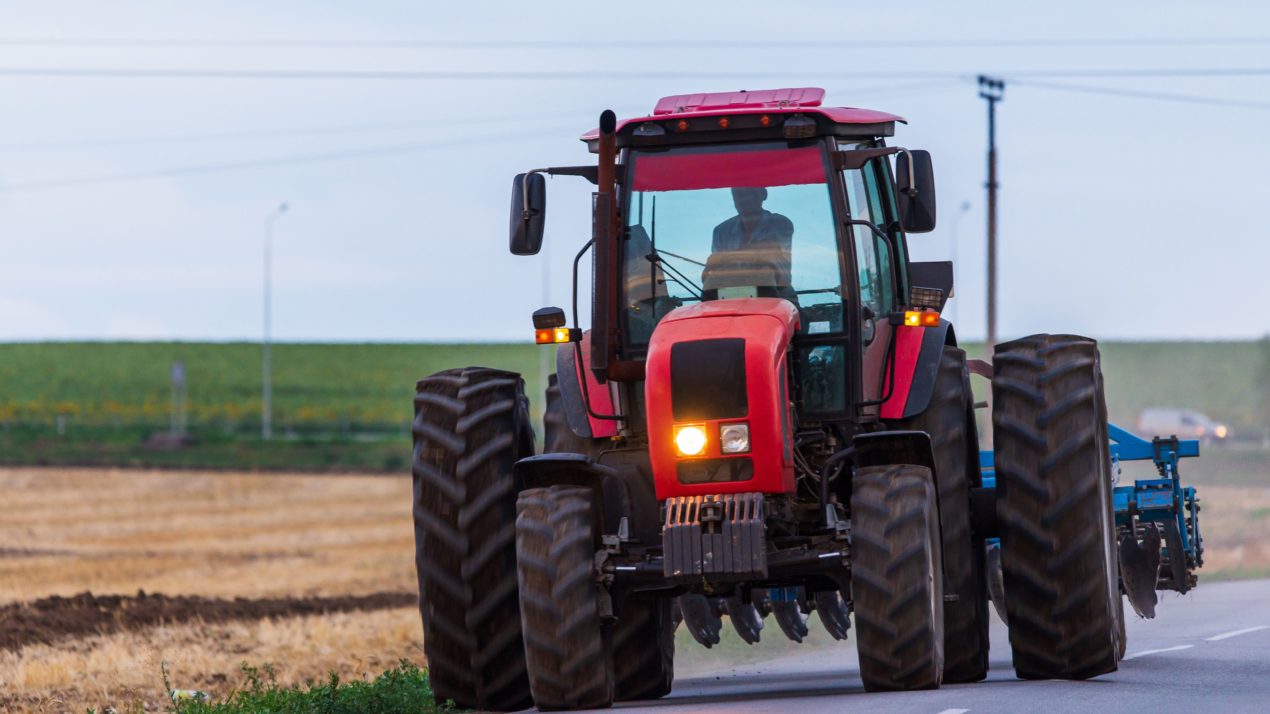
Spring is here, which means one thing for farmers: It’s time to hit the fields.
Road travel with agricultural implements is an increased hazard, and often a dreaded part of farming. Sharing the road means farmers need to have their vehicles meeting legal requirements as well as operating in a safe manner for road travel.
“Heightened awareness and patience during the busy field times applies to everyone,” said Wisconsin Farm Bureau President Kevin Krentz. “At the end of the day farmers and motorists alike want to return home to their families. Safety has to be a top priority for everyone sharing the road.”
According to the Wisconsin Department of Transportation, 34 people have been killed and 684 injured since 2010 in crashes involving agricultural equipment in Wisconsin.
Three scenarios that drivers and farmers should know how to handle are passing an IOH, left-hand turns and braking distance needed at controlled intersections.
Passing: Before you go to pass in a no-passing zone, know that is illegal to pass that IOH including farm tractors and farm machinery or an Agricultural Commercial Motor Vehicle (Ag CMV).
Motorists should wait until they enter a passing zone when considering going around a slow-moving vehicle. Farmers should not pull over in a no-passing zone to let vehicles pass unless the road shoulder condition and width can allow for the farm machinery to completely move onto the shoulder.
Farmers should also not wave a driver forward to pass them. While these actions seem courteous, it sends mixed signals and isn’t encouraged. In a passing zone, or if the shoulder width permits, farmers are obligated to yield the roadway to an overtaking vehicle so they do not impede the normal movement of traffic.
Left-hand turn: It can turn into a dangerous situation when a farmer is attempting to make a left-hand turn. Farm equipment, especially the tractor, will have two flashing amber or yellow lights on the cab or tire fenders of the tractor when in operation on the roadway. When a farmer signals to turn, the light will continue to flash in the direction the farmer is turning. The other light will go solid.
For motorists, this is an important distinction to recognize. For farm tractors or farm machinery without turn signals, hand signals should be used to indicate the farmer’s intention to turn.
A controlled intersection: When a motorist legally passes large farm equipment within a short distance of a controlled intersection (stop sign or stop lights), this action can dramatically impact the reaction time and braking distance for the farmer. Farm equipment is heavier than a normal passenger vehicle, which makes having adequate braking distance critical.
The Wisconsin Department of Transportation recommends that drivers should slow down immediately whenever they see a slow-moving vehicle emblem (orange and red triangle) on the rear of a tractor or other piece of equipment. This emblem indicates that the farm machine usually travels slower than 25 mph. Stay alert, focused and patient when passing a slow-moving agricultural vehicle in an area where passing is legal.
Farmers are asked to comply with the proper lighting and marking requirements to draw attention to the size, shape and speed of agricultural vehicles and to alert drivers that caution is required. There are specific requirements for different types of equipment. This information can be found here.
Farmers also should know their local weight restrictions. Generally, agricultural weight limits are 23,000 pounds per axle or 92,000 pounds gross vehicle weight, dependent on number of axles and axle spacing, and subject to seasonal or special postings.
Farmers can find more information about weight limits from the Wisconsin Department of Agriculture, Trade and Consumer Protection and Wisconsin Department of Transportation.
“Together we can have a safe planting season and enjoy the rural roads of Wisconsin,” Krentz added.

